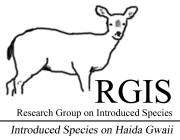

An overview of consequences
- Menu
- Home
- Haida Gwaii
- Introduced Species
- RGIS
- What did we learn?
- Research
- Publications
- RGIS symposium
- School curriculum
- Contacts
- English
- Français
|
|||
|
Raccoons were introduced for fur trapping the 1940's to capitalize on the hot Japanese fur market. Unfortunately, the fur market crashed shortly after and there was never any real demand for the furs again. |
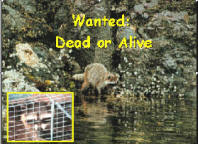 |
||
|
The forest, fresh water and salt water all provide food for the opportunistic raccoon. They compete with native species in the intertidal zone and are suspected of reducing the crab and shellfish populations. |
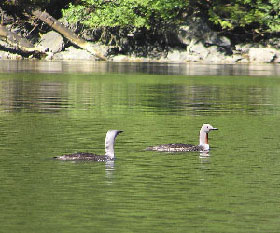 |
||
|
Native toad and eggs and
nestlings of red-throated loons (picture above), Canada geese and Sandhill cranes are
now easy prey to this introduced predator. |
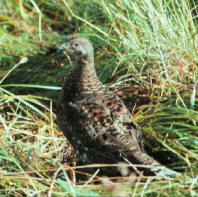 |
||
|
Raccoons, like rats, have had a tremendous impact on seabird nesting colonies on Haida Gwaii. There are 1.5 million seabirds that nest here, most in burrows in the ground and they have no defenses from introduced predators like raccoons and rats. In some cases nesting burrows are destroyed while eggs, chicks and adult birds are eaten and sometimes just killed and left (right). |
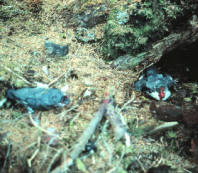 |
||
|
In 1995, the BC Ministry of Environment, Canadian Wildlife Service, Parks Canada, Council of the Haida Nation and Laskeek Bay Conservation Society developed a management plant and monitoring protocol to address raccoon presence in seabird colonies. In 2005, the BC Ministry of Environment decided that they would no longer support this program. |
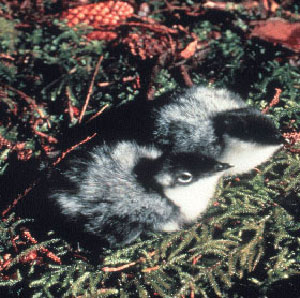 |
||
|
return to top of
page |
|||